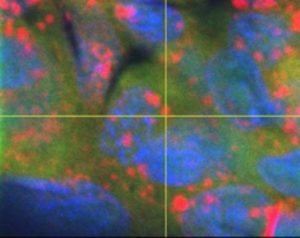The Importance of True Bioavailability
Bioavailability starts when a nutrient passes from the digestive system into the bloodstream. Absorption into the bloodstream, however, is only a partial measure of the body’s ability to benefit from a nutrient.
True bioavailability is the degree to which a substance (such as a nutrient) becomes available to the target molecular site after administration. For substances like vitamin C and glutathione, the target molecular site is typically inside the cell, and not just inside the bloodstream.
How do Nutrients Enter the Bloodstream?
The process of uptake from the digestive system varies greatly from nutrient to nutrient. Vitamin C is absorbed almost exclusively in the small intestine and requires the presence of transport proteins. For vitamin C, these transport proteins are called sodium-dependent vitamin C co-transporters (SVCTs). A lack of these proteins produces a corresponding lack of vitamin C uptake. Published research confirms that SVCTs (transport proteins) tightly regulate vitamin C absorption.
In one study with non-liposome-encapsulated vitamin C, 19 mg of a 20 mg oral dose entered the bloodstream. As the dose size increased beyond 30 mg, the blood level of vitamin C decreased drastically. They reported that a dose of 12,000 mg produced a maximum absorption of 16% into the bloodstream – That’s less than 2,000 mg!


